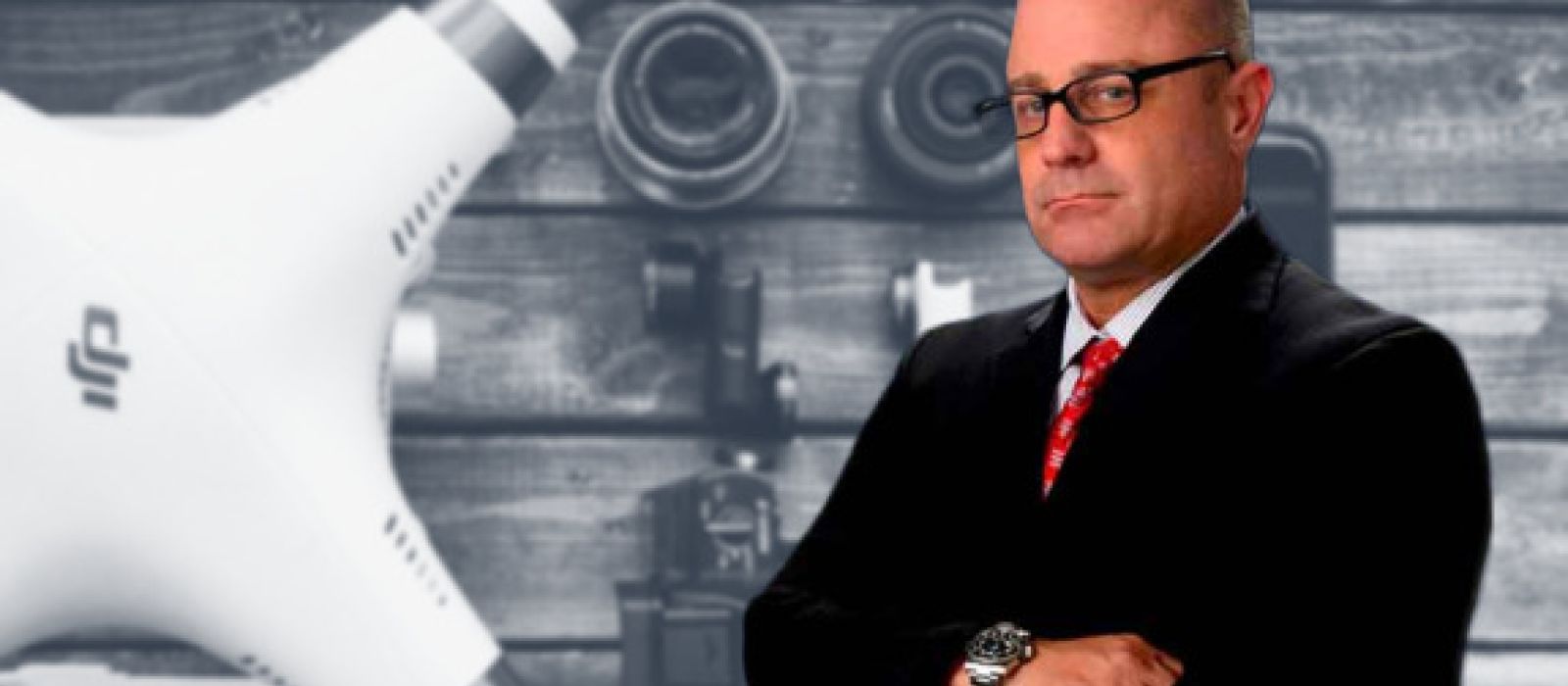

If we don’t win, you don’t pay.
NO WIN – NO FEE

ON CALL 24/7

U.S. Marine

Online grocery shopping has experienced rapid growth in the e-commerce sector, and it is predicted that nearly 70% of grocery shopping will be done online by 2024. Consequently, the food and tech industries have focused significantly on grocery delivery. In California, several companies have started developing and using autonomous delivery robots and automated taxis, including drone delivery systems, to deliver groceries, retail items, and other goods like dry cleaning to people’s homes. The chances are that an automated semi-truck or autonomous van with its delivery robot or drone will come to a California city near you.
During the COVID-19 pandemic, many California businesses reported increased business thanks to contactless, autonomous delivery robots, including drones. Heavier, automated delivery trucks are already being tested. However, as these automated and human-navigated robots become more prevalent, legal questions will likely arise when accidents occur. For instance, who would be legally responsible if an autonomous delivery robot accident happened?
Are there rights to sue in civil court, and if so, who? Who is held criminally at fault? Below, the personal injury attorneys at Ehline Law will answer your important legal questions about delivery companies, robots, drone laws, drone injuries, how to recover compensation for future medical expenses, past and present pain and suffering, and more.
Drones are Ground-Based Robots (UGVs) Too!
This article treats a drone, commonly known as an uncrewed aircraft, as a flying robot, including a ground or sea-based machine. While “drone” is frequently associated with flying aircraft, there are ground-based drones, also known as uncrewed ground vehicles (UGVs) or ground robots. These ground-based drones are vehicles that operate on the ground without the need for human operators onboard. However, hooligans and miscreants are real problems for ground drones, as shown in the example below from Twitter X.
Purposes?

They can be used for various purposes: surveillance, inspection, search and rescue, and delivery services. Officially, they are called uncrewed aerial vehicles (UAV) or unmanned aircraft systems (UASs). Drones can operate remotely with a drone operator, without a human pilot on board. Some are tracked, while others can fly autonomously through software-controlled flight plans embedded in their systems. These civilian systems are designed to work with onboard GPS and sensors in the air, land, and sometimes by sea to avoid severe injury or death.
Initially, the military primarily utilized an armed uncrewed aerial vehicle for activities like anti-aircraft target practice and intelligence gathering. However, ground, sea, and air-based drone applications have expanded significantly, serving various purposes. Civilian drone use includes search and rescue operations, traffic monitoring, surveillance, firefighting, and weather monitoring. Additionally, drones have gained popularity as toys for hobbies like drone racing and photography due to their ability to capture stunning aerial views. More individuals have encountered ground vehicle and air-based-related accidents and injuries with the increased utilization of robotics and drone technology for commercial operations involving the delivery of goods and food.
TIP: If you find got injured in any drone accident, it is essential to seek advice from a knowledgeable drone injury lawyer, such as those at Ehline Law, who can guide accident victims in seeking compensation for their automated robot-related injuries and damages. We will not hesitate to jump through hoops to get the kind and courteous consideration you deserve as a drone accident victim. Call us today to discuss getting compensated for out-of-pocket expenses for medical treatment, lost wages, and other aspects of your injuries, including disfigurement or blindness from a drone accident injury.

Drone and Automated Robot History
The history of flying drones traces back to the development of the first-ever drone called the Queen Bee. Equipped with a radio and a server-operated control in the back seat, it was meant to be operated conventionally from the front seat but flew unmanned. Over time, various private companies have been authorized to manufacture drones, with Amazon making headlines in 2013 by announcing its plan to use drones for commercial deliveries. Google Wing is the first company to operate a commercial drone delivery service. Domino Pizza and DHL are also testing drone delivery systems.
Examples of Earlier Drones
Military UGVs have been equipped with artillery, rockets, canons, and missiles. One notable example is the German Goliath tracked mine, a small remote-controlled tank-like vehicle packed with explosives and used for anti-tank and anti-personnel purposes. Later, in the 80s, the U.S. Army developed the Mobile Robot Development System (MRDS) for reconnaissance and surveillance missions. The 1990s saw further progress in UGV sensor technology as the U.S. military began deploying UGVs for Explosive Ordnance Disposal (EOD) tasks, reducing the risks to human EOD personnel. In the 2000s, American UGVs were used in Iraq and Afghanistan for reconnaissance, surveillance, mine-clearing, and improvised explosive device (IED) detection and disposal.
Drone surveillance, journalism, and racing have also gained popularity among drone enthusiasts, leading to the establishment of drone schools to educate subcontractors and others about drone laws and technology and to help prevent delivery companies from giving someone a drone injury.
The need for regulations to govern their safe operation has emerged with the increasing use of drones. Accidents and incidents involving drones hitting aircraft or causing injuries have raised concerns about their responsible use. In response, the U.S. Federal Aviation Administration (FAA) has introduced regulations known as the unmanned aircraft rules under Part 107.
These rules limit autonomous and semi-autonomous drone operations and flying cars to ensure safety. Some fundamental principles include requiring drones to remain within the visual line-of-sight of the remote pilot in command and the person controlling the flight, operating in daylight or civil twilight with appropriate anti-collision lighting, and yielding the right of way to other aircraft. By implementing these regulations, authorities aim to prevent accidents, promote responsible drone usage, and reduce the number of injury victims.
Drone Accident Statistics
Although we could find no delivery drone stats for ground-based drone accidents, based on data from the Federal Aviation Administration (FAA), there were 582 new reports of incidents related to uncrewed aircraft in the U.S. airspace system between August 21, 2015, and January 31, 2016.
General Findings
The study revealed several key findings:
- Consistent Drone Trends: The newer reports aligned with past trends indicate a continuation of the patterns observed in previous drone data regarding injuries caused by drones.
- Close Encounters With Drones: Only a third of all incidents were categorized as Close Encounters, which implies situations with a potential hazard or risk of drone accident injury.
- Increasing Drone Reports: The number of reported drone incidents continued to rise compared to previous years. During this specific period, there were three times more accidents than in the same timeframe of the preceding year.
- Proximity to Airports: Three out of five incidents occurred within 5 miles of an airport, suggesting a concerning number of launched drones operating near aviation facilities.
- Altitude Concerns: Nine out of ten incidents occurred above 400 feet, raising concerns about drones flying in restricted airspace while delivering food or packages.
- Involvement of Multi-Engine Aircraft: One-third of all Close Encounter incidents involved multi-engine aircraft, indicating the potential risks drones pose to larger human-crewed aircraft.
- Near-Misses: There were 24 incidents in which drones came within 50 feet of a human-crewed aircraft, and in 11 cases, the human-crewed aircraft had to make maneuvers to avoid collisions with drones.
These statistics underscore the importance of robust regulations and safety measures to address the increasing use of drones and mitigate their potential interference with manned aviation and public safety in towns for decades.
Statistics in Cities
As you may now recognize, the risk of a drone accident keeps rising. You’re not alone if a noisy drone fell on you or snapped your photo without permission.
The data shows the number of close encounters and sightings of drones in various cities:
- New York City and Newark, NJ: 43 close encounters and sightings.
- Los Angeles and Long Beach: 25 close encounters and sightings.
- Dallas and Addison, TX: 18 close encounters and findings.
- San Diego: 15 close encounters and sightings.
- Orlando and Houston: 13 and 11 close encounters and sightings, respectively.
- Philadelphia, PA, and Santa Ana, CA: Nine close encounters and sightings each.
- Atlanta and Chicago: Eight close encounters and findings each.
- Seattle: Seven close encounters and sightings.
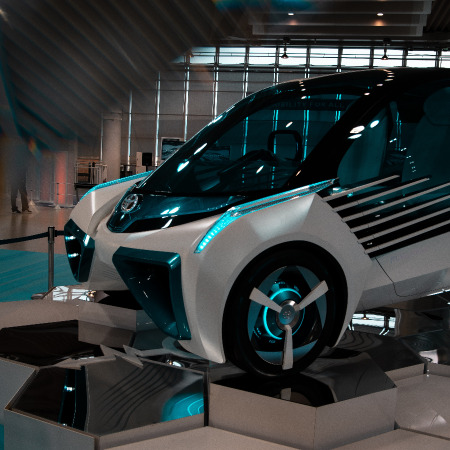
Examples of Autonomous Delivery Vehicle Testing
Along with grocery and retail stores, restaurants in California have begun using autonomous delivery vehicles. In Mountain View, Starship Deliveries uses sidewalk delivery robots to deliver food and other retail items. Another robotics company, Nuro, recently received a permit from the State of California to test its vehicle on public roads.
The vehicle is autonomous and passengerless, and it transports goods. Companies like Postmates and Uber Eats have also started using robots to deliver food orders. Amazon has started using autonomous delivery robots to deliver packages. While we imagine that new technology delivery robots will continue to evolve and become part of everyday life in Los Angeles and Torrance, California, many have noticed the potential for severe accidents with these capable but potentially dangerous machines.
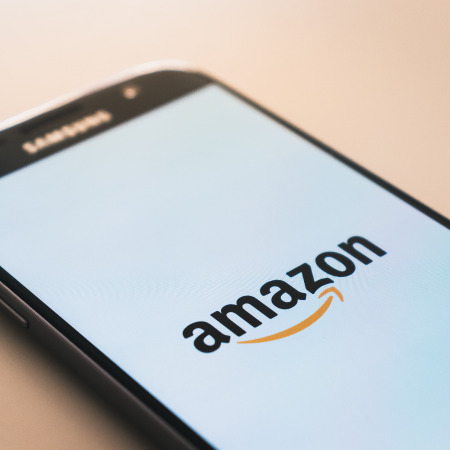
Negligent Flying Drone Operation?
There are rules to avoid a drone accident.
Drones must not:
- Operate directly over anyone not operating.
- Fly under a covered structure.
- Fly inside a covered stationary vehicle.
- Fly 30 minutes before official sunrise to 30 minutes after official sunset, local time. Daylight-only operations or civil twilight are allowed with appropriate anti-collision lighting only.
In addition, drones must yield the right of way to other human-crewed aircraft to avoid a potential drone accident.
Common Autonomous Vehicle Accidents?
Examples of accidents involving ground and air autonomous delivery robots may include:
- Traffic accidents: Autonomous delivery vehicles may collide with other cars on the road, causing property damage and potential injuries to drivers and passengers.
- Intersection accidents: Autonomous delivery vehicles may face challenges navigating traffic in busy intersections, leading to accidents with other vehicles or pedestrians.
- Pedestrian accidents: Delivery robots operating on sidewalks and pedestrian areas may inadvertently collide with pedestrians, causing injuries.
- Bicycle accidents: As more autonomous delivery vehicles share the road with cyclists, there is a potential for accidents involving bicycles and these vehicles.
- Accidents involving property damage: Delivery robots may encounter obstacles or property along their route, leading to property damage incidents.
While autonomous delivery vehicles are designed to operate safely and avoid accidents, their presence in public spaces presents new challenges and legal questions. Companies and regulators must address safety concerns, establish clear guidelines to prevent accidents, and determine liability in unfortunate incidents.
Causes of Autonomous Delivery Robot and Drone Accidents
According to research conducted by Mashable, most drone accidents are attributed to technological issues rather than human error. The Federal Aviation Administration (FAA) estimated that around 2.5 million drones were in use in 2016, with more than 406,000 individuals registering drones. However, FAA records indicated that only 320,000 of these drones were reported to have been actively piloted.
Autonomous delivery robot accidents can occur due to various factors related to the robots and external environmental conditions.
Some potential causes of accidents involving these vehicles are:
- Defective sensors: Faulty or malfunctioning sensors may lead to incorrect data input, affecting the robot’s ability to perceive its surroundings accurately.
- Low battery or maintenance issues: Robots with low battery levels or inadequate maintenance may experience performance problems or unexpected shutdowns.
- Design flaws: Poorly designed robots may have inherent flaws that compromise their safety and maneuverability.
- Software glitches: Errors in the robot’s software can lead to unpredictable behavior and improper responses to changing conditions, leading to a drone accident.
- Environmental factors: Weather conditions, poor lighting, obstructing landscapes, and other traffic can obscure the presence or movements of autonomous delivery robots, leading to drone accident cases.
- Range and connectivity issues: Robots operating on the edge of their communication range or experiencing connectivity problems may face challenges in receiving real-time instructions or updates, which can also lead to a drone accident.
- Inadequate response to changing conditions: Robots may struggle to respond quickly and effectively to sudden changes in traffic, obstacles, or pedestrian behavior to avoid a drone accident.
- Lack of Flight Experience and Knowledge: Many drone users lack proper training and experience operating drones, leading to most drone accidents.
- Use of Wrong Drones by First-Time Users: Inexperienced users sometimes choose large and complex drones instead of starting with smaller, more manageable ones.
- Ignoring FAA Rules: Some users disregard regulations set by the Federal Aviation Administration (FAA), such as flying near airports, posing risks of drone accidents with aircraft.
Common Injuries Caused by Ground and Air-Based Delivery Drones?
Ground and air-based delivery drones can potentially cause various types of injuries to humans and property.
Some common injuries caused by these drones include:
- Hand Injuries
- Falls
- Potential Broken Bones, Back, Neck, and Spinal Cord Injuries
- Collisions: Delivery drones, especially air-based ones, can collide with people, vehicles, or other objects. In the case of ground-based drones, collisions with pedestrians or obstacles may occur, leading to injuries.
- Lacerations and Cuts: Rotating propellers on both ground and air-based drones can cause scrapes and cuts if they come into contact with a person or object.
- Eye Injuries: Air-based drones flying at high speeds can pose a risk to the eyes if they accidentally crash into a person or if a malfunction occurs.
- Contusions and Bruises: Impact from drone crashes, particularly ground-based drones with larger sizes, can lead to contusions and bruises.
- Brain Injury: In some cases, drones may malfunction or fall from the sky, potentially striking and injuring individuals or property below.
- Burns from Battery Explosions: Lithium-ion batteries used in drones can pose a risk of explosion or fire if they malfunction or stand damaged. As with all malfunctioning drones, there is a risk of burns from contact with hot components or battery fires.
Drone-Related Fatalities
- The first reported death linked to a drone accident injury occurred in London, where a young woman died in a car crash. It was believed that her boyfriend was operating the drone, which, based on the details, was found in the car they were driving.
- A significant drone accident occurred when a drone narrowly missed colliding with an Airbus A320 during takeoff from Heathrow Airport in London. The Civil Aviation Authority in the U.K. rated this near-miss as a “serious risk of collision,” the highest rating for such difficult incidents involving UAVs.
These incidents underscore the importance of robust regulations, proper drone piloting, and awareness of potential risks associated with drone usage to ensure public safety and avoid potential accidents. Due to the complexities and potential risks associated with autonomous delivery robots, individuals injured in such incidents must seek legal advice for their situation. Consulting with an experienced car accident and product liability attorney can help injured parties understand their rights, navigate the legal process, and pursue compensation for their injuries and damages from a drone accident.
Common Types of Drones:
- Tricopter: A drone with three propellers.
- Quadrocopter: A drone with four propellers.
- Octocopter: This drone has eight propellers, a multicopter or hexacopter.
- Camera Drone: A drone equipped with a camera.
- GPS-enabled or Non-GPS-enabled Drones: Drones that may or may not have GPS capabilities.
- Drones with Stabilizers: Drones equipped with stabilizing mechanisms.
Steps to Take After Experiencing Injuries From Unmanned Aerial Vehicles or an Automated Robot
- Seek Medical Help: If injured in a drone accident, promptly seek medical assistance, as some injuries may not be immediately apparent.
- Inform the Licensing Company: Contact the company that licensed you and report the accident. Repair the drone before further use and document the cost and labor performed.
- Acquire Proper Drone Operation Skills: If you lack expertise in operating a drone, learn the necessary skills from an online course or seek guidance from the vendor about restrictions.
- Consult a Personal Injury Lawyer: If injured by a drone, regardless of the circumstances, consider contacting a personal injury lawyer experienced in drone accident cases to explore compensation options for your injuries.
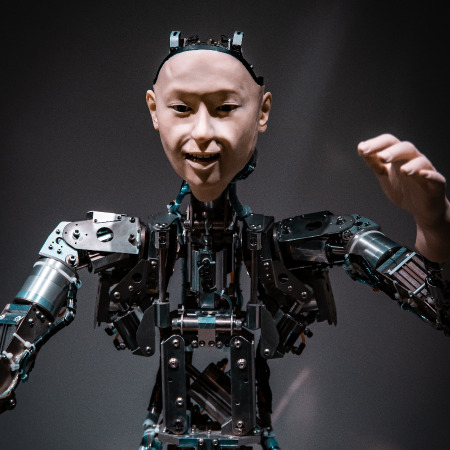
Liability Issues – Who Do I Sue?
Large companies that operate drones for commercial purposes often use clever strategies to distance themselves from liability. They may hire subcontractors to handle deliveries, making the subcontractor responsible for accidents and injuries. However, subcontractors may lack sufficient insurance and assets to cover damages.
Moreover, these companies may avoid displaying their brand on drones, similar to unmarked delivery trucks. If accidents happen due to unsafe practices, the leading company can distance itself from responsibility and reduce its liability. You may be entitled to compensation for lost wages, medical bills, loss of consortium, or more. This is another reason to hire a lawyer. Your settlement could mean the difference between recovering thousands of dollars or increasing millions of dollars depending on who you hire. We have helped hundreds of accident victims, and you can call us for a free consultation today at (213) 596-9642.
Federal Aviation Administration and Other Concerns
The FAA controls flying drone safety, whereas local agencies and common law govern ground vehicles. In the United States, the primary regulatory body for autonomous ground vehicles, including delivery robots, is the National Highway Traffic Safety Administration (NHTSA), which operates under the U.S. Department of Transportation (DOT). The NHTSA is responsible for setting safety standards and regulations for motor vehicles, including autonomous vehicles.
Robot and Drone Accident Insurance
Homeowners’ and renters’ insurance policies typically cover drones as personal property, with an average deductible of $500. However, around 60% of renters in the United States do not have drone coverage.
Coverage for injuries and damages caused by a drone depends on the specific circumstances of the accident, including the safe speed for conditions presented to persons nearby. Negligence must be proven to claim damages, and if the drone on autopilot caused injury to someone’s property, it increases the chances of receiving compensation.
The insurance company evaluates each insurance claim on its own merit. If a drone damages personal property, it falls under the basic coverage of the structure in homeowners’ insurance. However, homeowners’ insurance does not cover injuries to family members or pets, which are covered by a medical insurance policy.
- Delivery Drone: If a commercial drone causes bodily injury to someone outside your family, the initial liability will likely fall under the homeowner’s policy instead of the company delivering the goods or food. However, as discussed above, you may have claims against multiple defendants responsible for the delivery. This coverage also helps protect against privacy concerns and related lawsuits.
- Auto: If a drone falls from the sky and damages your car, it will be covered by the comprehensive section of your auto policy, subject to deductibles.
- Private: Drones weighing over 0.55 pounds must be registered with the Federal Aviation Agency, similar to a commercial or non-commercial plane. If a private drone owner can be identified in a non-commercial accident, the victim can file an insurance claim under the defendant’s home or renters’ policy.
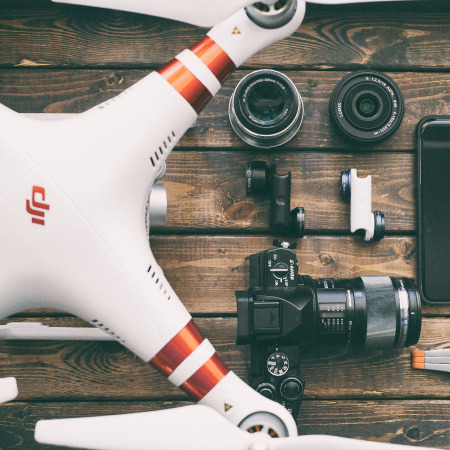
A malfunctioning drone has the potential to unexpectedly collide with pedestrians. Due to this concern, the Boston Marathon has banned flying drones during its annual marathon event despite drones being practical surveillance tools for those connected with law enforcement.
Other Common Legal Questions With Autonomous Delivery Robot Vehicles
The increasing use and danger of autonomous delivery robots have raised several legal questions and concerns about their operation and liability in case of accidents involving bystanders and customers worldwide.
Some of these questions include:
- Compliance with financial responsibility laws: Are motorized delivery robots required to comply with the same financial responsibility laws as other motorized vehicles, such as having insurance coverage to carry and deliver a package to customers?
- Registration with the DMV: Do operators of delivery robots have a duty to register them with the Department of Motor Vehicles (DMV) like other motorized vehicles with a driver? How do we document information about witnesses so someone can later bring a lawsuit?
- Ownership, maintenance, and usage information: How can someone prove ownership, maintenance, and usage information of autonomous delivery robots? Will it be easily accessed and identified in case of harm after an accident? Is there a phone number to call?
- Access to data recorded by robots: Who will access the data recorded or obtained by the robot’s cameras and sensors? How long will this data be stored, by whom, and for what purpose?
- Liability assignment: In case of an accident involving a light delivery robot that struck you, who will be held liable for the damages or trespass if it goes too low over another person’s house? Will it be the company controlling or steering the robot, the manufacturers, the designer, or someone else?
- Human interaction and autonomy: As delivery robots become more autonomous and require less human interaction, how will the current liability framework adapt to address accidents where human control is limited or absent? How will crowds or children be affected by the new dangers presented overhead or via land?
The legal system in California and other states may need to adapt and rework the liability framework to account for the increasing autonomy of delivery robots. As technology advances, it will become crucial to determine the responsibility and liability of these robots in the event of such accidents. Courts and lawmakers will likely grapple with these issues as remotely controlled delivery robots become more prevalent. You must hire an expert, quality lawyer with decades of experience to resolve and answer these questions. In most cases, you mustn’t wait for the time to sue to expire if you got hurt.
It would help to remember the statute of limitations in your matter, which could expire. Evidence can disappear, so consumers must search for the right lawyer and act quickly.
TIP: It’s never cheaper to hire a lawyer based on percentage, so focus on experience, even if you think you hit the jackpot in a slam-dunk lawsuit. It would help to speak to a lawyer to fight for you before ruining your case. At least you should discuss the events before you are committed to doing nothing or hiring a crappy billboard lawyer to pursue the defendant. Even if you have to travel and think it’s a small case, hiring the right lawyer to win the most compensation is essential. It’s worth it to make a quick and free call.
Do I Need An Automated Delivery Robot or Drone Injury Lawyer?
Finally, if interested personal injury victims have suffered a drone accident injury, it is advisable they swiftly consult with a qualified drone injury lawyer. Ehline Law can help these victims seek compensation for their serious injuries and damages. Ehline Law has over 30 years of experience swiftly resolving cases for injured clients. Michael has recovered his clients over $150 million in compensation for more than 13,000 personal injuries.
Seeking the guidance of an experienced personal injury firm like Ehline Law can be crucial in getting clients the compensation they deserve for medical bills and reasonable care. Contact us for a free consultation to learn more about how we can assist civilians and even military personnel – we are here to help 24/7 to get you paid for a catastrophic, serious injury or wrongful death claim arising from delivery services gone wrong. Our experienced attorneys are standing by to answer your questions. Our compassionate team is ready to help you seek justice on a contingency fee basis, seven days a week, to discuss your issue.


